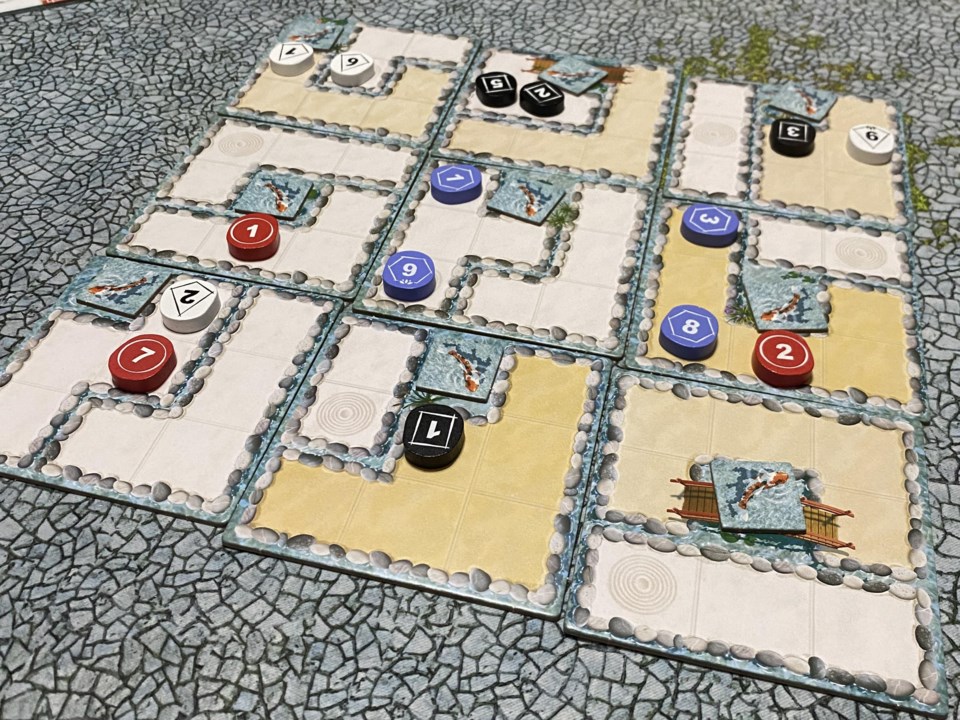YORKTON - If you are a fan of Sudoku, stop reading this week’s review and just go order Hiroba.
If not exactly a fan – our sense is Sudoku is not the phenomenon it once was – then here is why Hiroba should still catch your attention.
Hiroba is at it’s heart an abstract strategy game. There are no hidden elements here. That is a good thing – a least in the mind of the Meeple Guilder penning this review.
The game offers a number of tiles, each with two ‘gardens’. Gardens generally have koi ponds and koi have value in the game. You lay out nine tiles in a grid, playing with all four in a four-layer game, and less with less players.
Players each receive a two sided (the two sides add up to 10) - numbered pebbles – nice wooden bits, which over the course of the game you place onto the board so you can take control of the most gardens.
As in Sudoku, you must never have two pebbles of identical value in the same garden, row or column – therein lies the dance.
So with the aforementioned koi you want to place low numbered pebbles.
For each Pond, the Koi token is given to the player whose pebbles in the orthogonally adjacent squares have the lowest combined total.
The players then place each of their Koi tokens (Sand side) on an empty square of a Garden of their choice that they have won outright (without being tied). When you complete the final scoring, this Garden's points will be doubled.
Next, players calculate the points for their Gardens, tile by tile.
For each of the two Gardens on the tile, the player whose total pebble value is the highest wins the Garden, and so receives points equal to the number of squares in that Garden. If there is a tie, the tied players each receive the points for winning that Garden.
Reminder: When a Garden contains a Koi token, the points for that Garden (equal to the number of squares in that Garden) are doubled.
And that’s basically it.
Oh there are stones, although not all get them, which may be placed as a bonus action to essentially block that square. Why in a four-player game the first player has two stones and the fourth player none is not exactly clear though and was frustrating for player four.
An explanation of why stones are needed would have been a good thing.
The game by Johan Benvenuto, Alexandre Droit, Bertrand Roux and from Funnyfox, plays quickly. They say 25-minutes but that would be the longest.
So it’s sort of a middling-filler – albeit quite a bit more ‘thinky’ in nature than most fillers which tend to be ‘brain-testers’ before, between, or after meatier games.
Perhaps because of the thinking this game sort of grows on you as you go.
There is more to this one than is immediately obvious, especially balancing playing low to get koi, but high to score gardens, all within the limitations of Suduko placement.
In the end it’s a great game – but you probably need to like Suduko at least a little.
Check it out via






